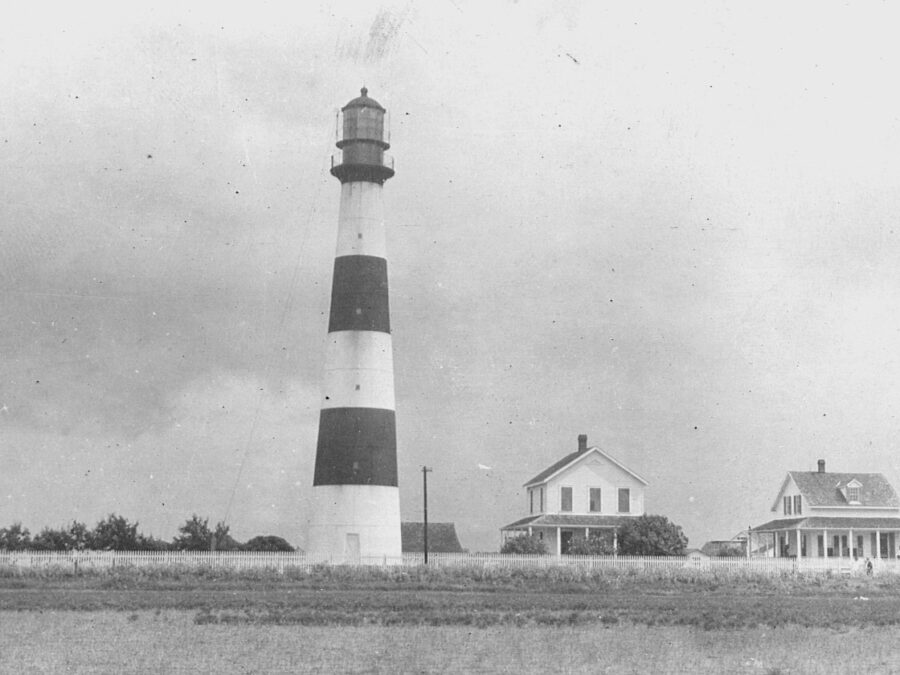
For years, the U.S. Life-Saving Service boasted the unofficial motto of “You have to go out, but you don’t have to come back.” This phrase refers to the fact that Life-Saving Service personnel often braved the worst sea and weather conditions to save the lives of others–many of them lost their own lives in the process. Members of the United States Lighthouse Service not only served in harm’s way, but they also lived in harm’s way. Manning lighthouses, lightships, buoy tenders and shore installations, scores of Lighthouse Service personnel made the ultimate sacrifice to maintain aids to navigation in domestic waters and overseas. Such was the case in the Great Galveston Hurricane of 1900, the worst natural disaster in U.S. history. Estimates for those killed in Galveston by this super hurricane range from 6,000 to 8,000 and, it is believed, that as many as 4,000 died in the rest of the Gulf Coast area.
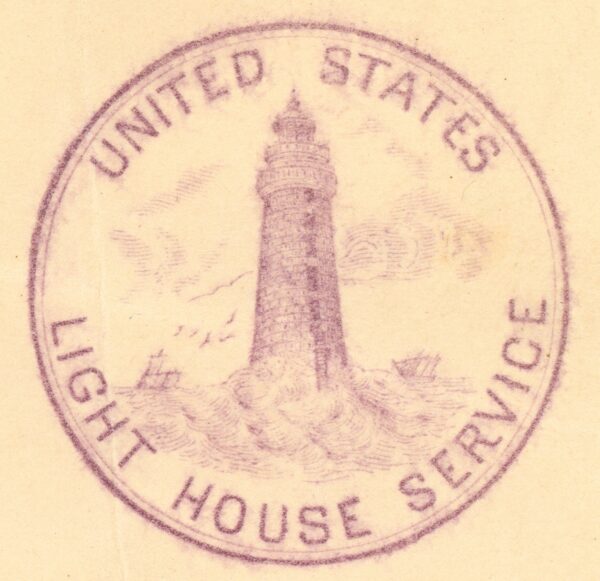
By 1900, the Lighthouse Service maintained several aids to navigation marking the navigable waters in the Galveston area. These included lightship LV-28; screw-pile lighthouses at Redfish Bar, Halfmoon Shoal, and Fort Point; and an iron encased brick tower lighthouse located on Bolivar Point on the south side of the channel to Galveston Bay. The Great Galveston Hurricane destroyed or damaged the three screw-pile lighthouses killing one keeper. Lightkeeper Harry C. Claiborne manned the tower lighthouse at Bolivar Point south of Galveston Island. Born in New Orleans in 1859, Claiborne had begun his Lighthouse Service career in 1887.
The Hurricane of 1900 struck Galveston early on Saturday, September 8th. At Bolivar Point, the storm surge flooded the low-lying peninsula and strong winds and floodwaters began to build around the lighthouse tower. That afternoon, flooding halted a small passenger train approaching the Bolivar Point terminal to meet the ferry across the channel to Galveston. Of the nearly 100 passengers and crew on board the train, only nine braved waist-deep water to seek the safety of Bolivar Light. They were the last individuals to gain entry to the tower before seawater sealed off the tower’s first floor entrance. The rising storm surge surrounded their train, trapped the rest of the occupants within the passenger cars and drowned them all.
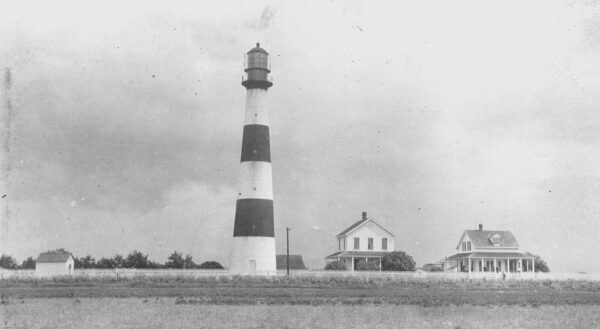
Approximately 125 storm victims sought refuge with Keeper Claiborne while wind and water swirled around the tower. With seas breaking against the base of the lighthouse, Claiborne did his best to care for his flock. These weary men, women and children rode out the stormy night seated on the spiraling steps leading up to the lantern room and Fresnel lens. While he had provisions to feed them, he had no fresh water available in the tower. He tried to fill pales with rainwater at the top of the lighthouse, but the buckets only filled with wind-driven salt water. That night, tower occupants could hear big guns booming at the newly constructed Fort Travis, on the Gulf side of Bolivar Point. Surrounded by floodwaters and defenseless against the storm’s fury, the trapped U.S. Army artillerymen tried in vain to use their shore batteries as a distress signal.
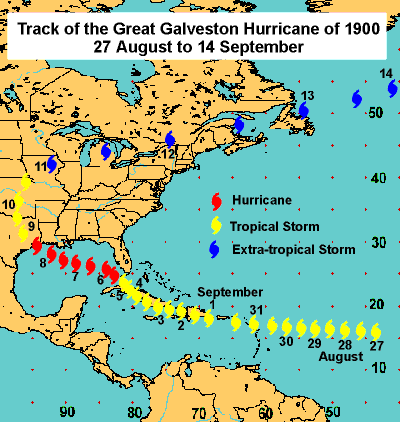
The next day, as the storm passed to the north, the tower’s occupants left the safety of the lighthouse to find a scene reminiscent of a Civil War battlefield. As the storm waters receded, dozens of bodies surrounded the lighthouse testifying to those who had tried and failed to gain the safety of the tower. During the hurricane, Claiborne’s storm survivors had consumed all his food and provisions. And when he returned to the keeper’s quarters to take stock of his belongings, he found that the storm surge had wiped out his household and worldly goods.
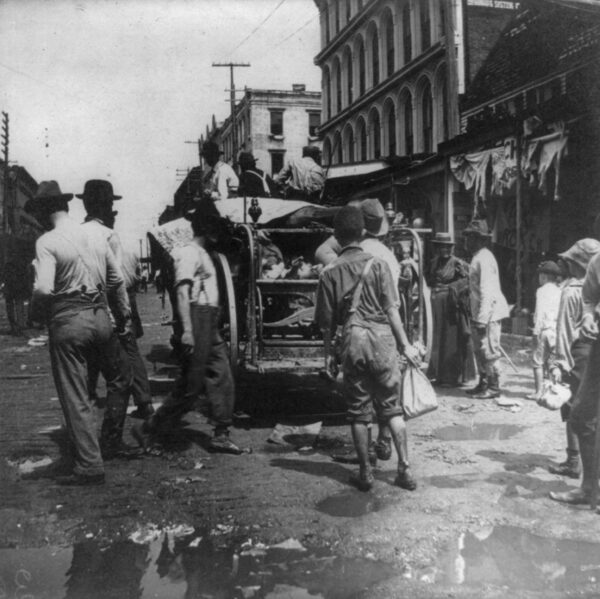
After the destruction of the keeper’s quarters in 1900 and its subsequent reconstruction, Claiborne and his wife endured a second super hurricane in 1915. Claiborne had never received reimbursement for the loss of his belongings from the first hurricane and the second catastrophic storm destroyed their quarters yet again. With the quarters demolished a second time and corpses of animals and humans littering the grounds surrounding the lighthouse, Claiborne contracted an intestinal disease that led to his death in 1918. During his thirty-one-year career, he had faithfully kept the light and saved hundreds of lives, yet he never received reimbursement for storm losses during his lifetime. Congress finally provided his wife restitution in 1921, after she and her late husband had pleaded for over two decades.
In the Great Galveston Hurricane, Harry Claiborne demonstrated great devotion to duty. He manned the light in the worst sea and weather conditions and saved hundreds of storm victims. He was a member of the long blue line and manned the Bolivar Point Lighthouse in the Galveston hurricanes of 1900 and 1915. He died of storm-related disease while still on active duty at the age of fifty-nine. As is often the case with Coast Guard heroes, there exists no painting or photograph to preserve Claiborne’s likeness. However, in 1999, the Coast Guard recognized his faithful service as the namesake of the 175-foot Keeper-Class buoy tender Harry Claiborne.
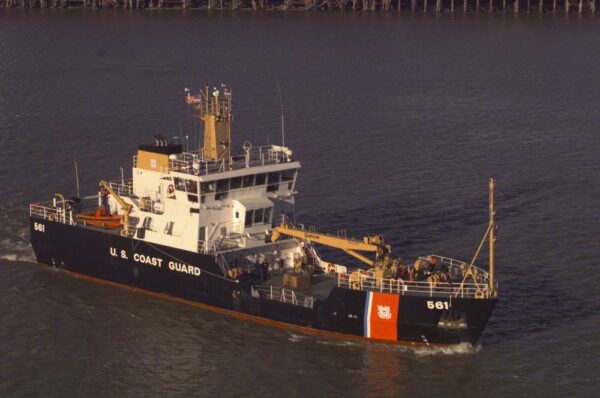
National Coast Guard Museum insider tip: Visitors to the National Coast Guard Museum will have the opportunity to learn more about the Galveston Hurricane of 1900 in the Lifesavers Around the Globe wing on Deck 2, and about the dangers of lighthouse keeping in Deck 4’s Champions of Commerce wing.
